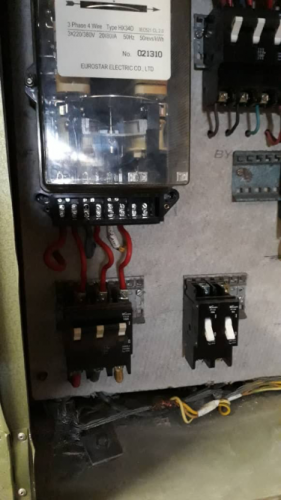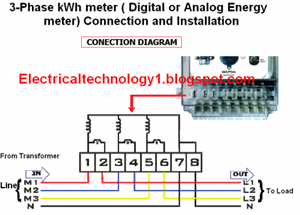I have been asked by the owner of a saw mill: Does a three phase meter (Old rotating wheel type) need to have a neutral connected to it in order to work correctly?
This is a property that only uses three phase motors for a saw mill and some lights (That I assume are single phase but quite how that works I'm not sure..........)
This is in a far flung country and is probably a TT system with no earths at all and certainly no RCDs.
AJ - I managed to delete my last post when I was trying to attach a picture; I know you replied to me previous post, thank you very much, and I'm sorry to have deleted your reply to me.
It seems that there are no neutrals what so ever into this saw mill......It looks to me like the terminals for the neutral are present but no neutral is connected.
It may be that the lights are connected to earth as I know that there has been a lot of equi-potential type bonding going on - on this property between machines, structural steelwork, in the ground, all sorts.
I cant get out there to see whats going on or advise at all because I cant see what effect my advise would have. Certainly if there is single phase lighting going on the neutral is essential.
The metering I could possibly, with your help advise on. I'd love to post a picture but I'm not sure how. I'll copy this message now and try again........Dammed if I know how to attach a photo........


